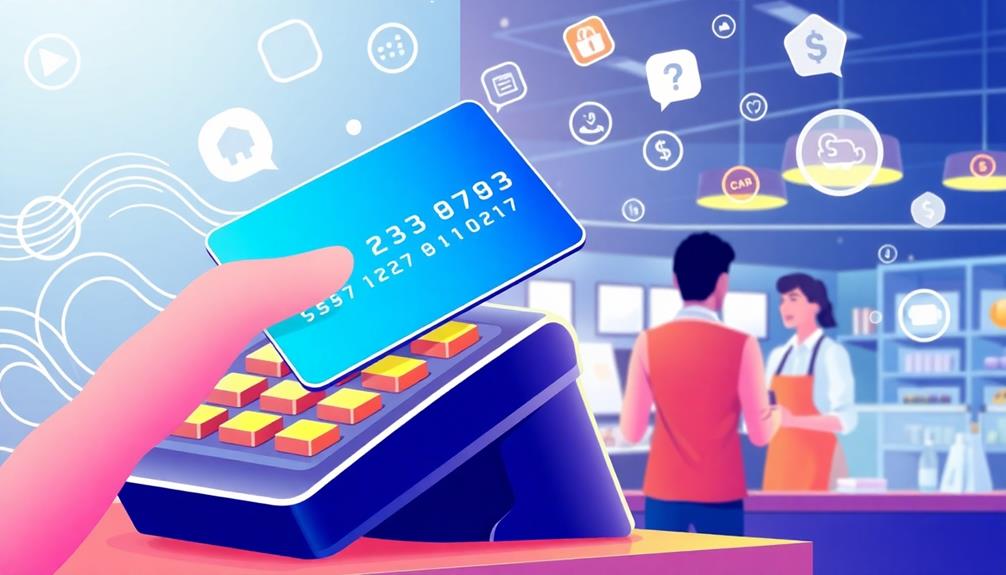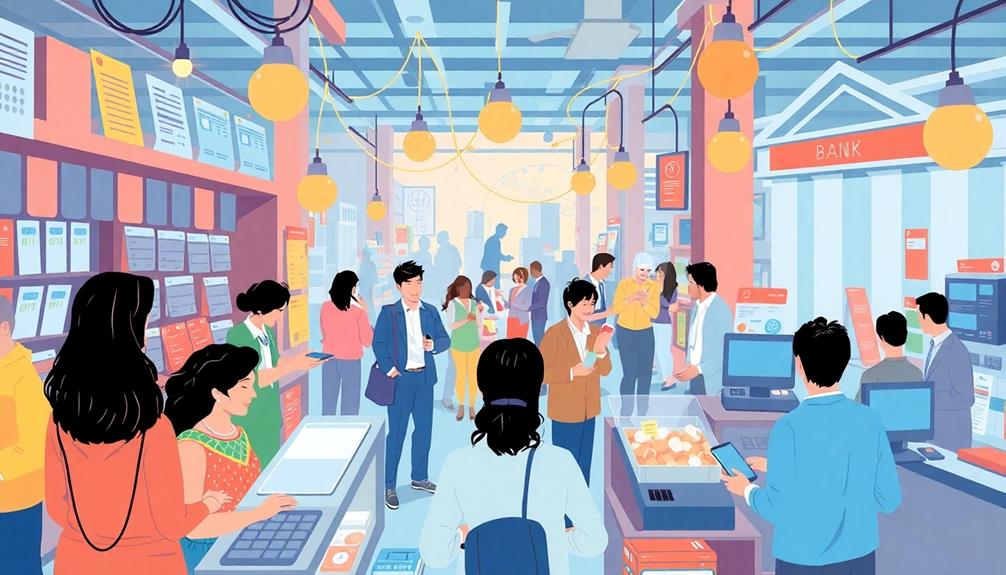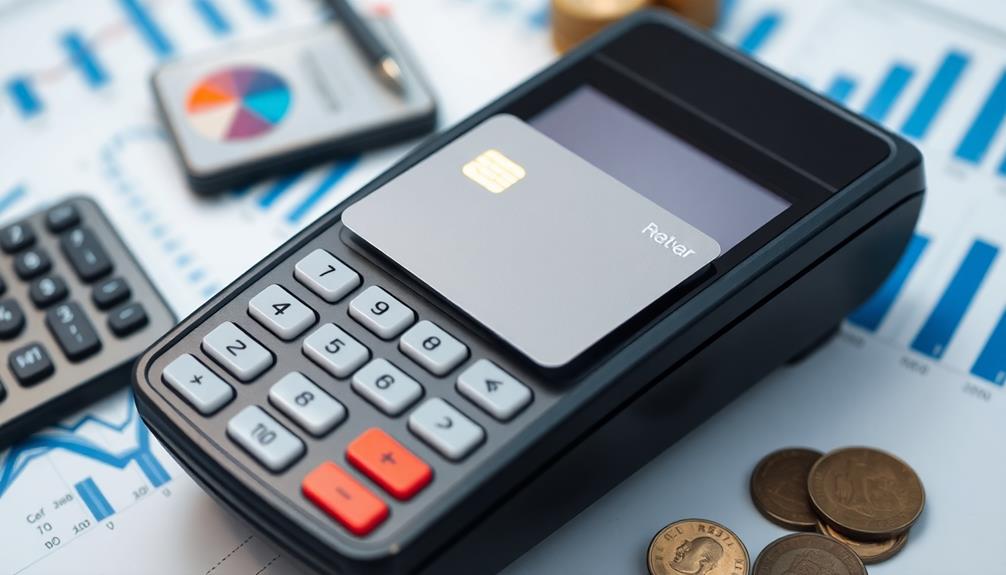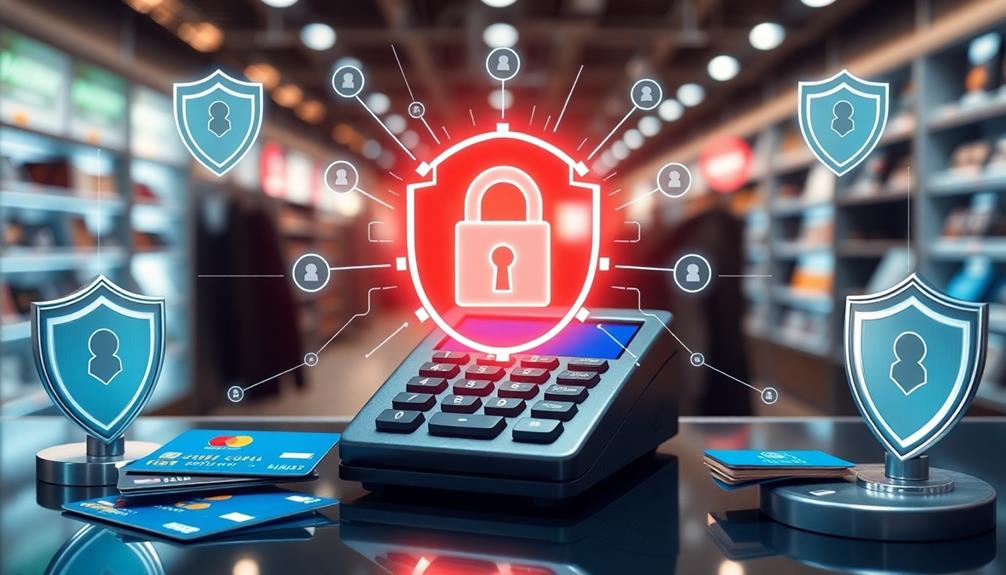Credit card processing is essential for your business, allowing you to accept payments from customers quickly. The process starts when a customer swipes, inserts, or taps their card. Data is then sent to a merchant service provider for authorization. Your acquiring bank handles the transaction, checking for funds and depositing them after deducting fees. You'll encounter various fees, including processing and interchange fees, so understanding these is key. Plus, security measures like PCI compliance help protect sensitive information. If you're curious about the broader aspects and best practices in this area, there's plenty more to uncover.
Key Takeaways
- Credit card processing involves multiple players, including cardholders, merchants, payment gateways, processors, and issuers working together to complete transactions.
- Transactions are initiated by customers swiping, inserting, or tapping their cards, with data sent to an acquiring bank for authorization.
- Understanding credit card fees, including processing, interchange, and additional charges, is crucial for managing costs effectively.
- Security measures like PCI compliance, encryption, and tokenization are essential to protect cardholder data and prevent fraud.
- Regularly reviewing processing statements helps merchants identify discrepancies and optimize their payment processing strategies.
History of Credit Card Processing
In the early 20th century, credit cards began as courtesy cards, primarily utilized by U.S. businesses like oil companies and hotels to foster customer loyalty. The history of credit cards took a significant turn in 1950 with the introduction of the Diners Club Card, which required full monthly payments. This marked the first time consumers could charge their restaurant bills, paving the way for modern credit card transactions.
Common Financial Terms such as credit score and interest rate started to become integral in understanding the implications of credit usage.
In 1958, Bank of America launched the BankAmericard, the first modern credit card that later evolved into Visa. This innovation changed how credit card processing worked, as it introduced credit card networks that connected merchants and card issuers.
The 1980s brought the Discover card, which introduced cash-back incentives, further increasing competition and encouraging rewards programs.
Key regulations like the Truth in Lending Act were established in the 1960s and 70s to protect consumers and guarantee transparency in credit card transaction information.
Understanding these historical milestones helps you appreciate how credit card processing has evolved, including aspects like interchange fees, which play a vital role in today's credit card transactions.
How Credit Card Processing Works

Understanding the evolution of credit cards sets the stage for grasping how credit card processing operates today. When a customer swipes, inserts, or taps their card, the payment processing journey begins. The data from the transaction is sent to your merchant service provider (MSP) or acquiring bank for authorization. Here, the card network and issuing bank check for approval. This process is essential for various financial instruments, such as a Gold IRA, which also involves careful management of assets.
Once the issuing bank verifies that funds are available, it returns an authorization code to you, confirming the transaction can proceed. After authorization, you typically batch your transactions to send to the acquiring bank for clearing and settlement, which usually happens at the end of your business day.
This multi-step process guarantees that transactions are secure and efficient. The acquiring bank then deposits the funds into your account, but not before deducting any applicable transaction fees, which can vary based on your agreement with the MSP.
Throughout this process, security measures are critical to protect sensitive information. With the right credit card readers and systems in place, you can guarantee a smooth transaction experience for your customers while effectively managing your payment processing.
Key Players in Payment Processing

Several key players are essential to the payment processing ecosystem, each playing a distinct role in ensuring transactions run smoothly. The cardholder is the individual using a credit card to make purchases, initiating the entire process.
As a merchant, you accept credit card payments in exchange for goods or services, relying on a seamless transaction experience. By utilizing merchant account credit processing, you can facilitate your business growth and improve customer satisfaction through efficient payment methods.
The payment gateway comes into play as a critical technology that securely transmits cardholder information from you, the merchant, to the payment processor. This processor acts as an intermediary, managing the flow of transaction data and funds between the payment gateway, card networks, and banks.
The issuer, a financial institution, provides credit cards to consumers and authorizes transactions. They manage cardholder accounts, ensuring that funds are available for the transaction.
Understanding these roles helps you navigate the landscape of payment processing efficiently. By recognizing the importance of each player in facilitating credit card payments, you can better strategize your approach to accepting credit cards and optimizing the overall transaction experience for your customers.
Understanding Credit Card Fees

Credit card fees can greatly impact your business's bottom line, so it's important to grasp how they work. Credit card processing fees typically range from 1.5% to 3.5% per transaction, with debit transactions incurring lower fees. The largest component of these costs is the interchange fee, which varies by card type and usually falls within that same percentage range.
Implementing effective fraud prevention tools, such as effective fraud prevention tools, can help mitigate some risks associated with these fees.
In addition to interchange fees, you're likely to encounter transaction fees, monthly service fees, and chargeback fees, which can lead to hidden costs that eat into your profits. It's important to understand these various charges to manage your expenses effectively.
Common pricing models include interchange-plus, where a markup is added to the interchange fee, and flat-rate pricing, which offers predictability in costs—a favored option for startups.
Regularly reviewing your processing statements is essential to identify any discrepancies and hidden fees that could impact your overall profitability. By staying informed about these fees, you can make better decisions for your business and optimize your payment processing strategy.
Security Measures in Processing

In today's digital landscape, securing cardholder data during transactions is more essential than ever. As a merchant, implementing robust security measures is crucial to protect your business and your customers. Start by ensuring PCI compliance, which mandates specific security protocols for safeguarding cardholder data.
Utilizing end-to-end encryption during transactions makes sensitive information unreadable to unauthorized parties. Coupled with tokenization, you can replace card details with unique tokens, minimizing the risk of data breaches since real card information isn't stored on your servers.
Regular software updates are crucial for addressing vulnerabilities, keeping your payment systems secure against potential threats. Additionally, incorporating fraud detection tools can help you identify suspicious transaction patterns in real-time, greatly reducing chargebacks and losses.
Here's a quick overview of effective security measures:
| Security Measure | Purpose | Benefit |
|---|---|---|
| PCI Compliance | Protect cardholder data | Legal and financial protection |
| End-to-End Encryption | Safeguard sensitive information | Prevent unauthorized access |
| Tokenization | Replace sensitive card info with tokens | Reduce data breach risks |
| Fraud Detection Tools | Analyze transaction patterns | Identify suspicious activities |
Frequently Asked Questions
What Are the Steps of Credit Card Processing?
To process a credit card, you start with authorization, await the issuing bank's approval, batch transactions, send details to card networks for clearing, and finally, receive funds in your account from the acquiring bank.
What Are the Four Credit Card Processing Networks?
You'll find that the four major credit card processing networks are Visa, MasterCard, American Express, and Discover. Each network has its unique features and benefits, impacting how you process transactions and engage customers.
What Are the Merchant Processing Activities?
Merchant processing activities start when you initiate a transaction. You send card details to a payment gateway, which forwards them to a processor that requests authorization, ultimately leading to funds being deposited in your account.
What Are the Methods for Processing Credit Cards?
You might think credit card processing is simple, but it's not just one method. You can process payments in-person with POS systems, online through gateways, or manually via virtual terminals. Each method has distinct benefits.
Conclusion
To summarize, understanding credit card processing is crucial for any new merchant. Did you know that over 70% of consumers prefer using credit cards for their purchases? By grasping the basics—from how transactions work to the key players involved—you'll be better equipped to navigate this important aspect of your business. Stay informed about fees and security measures, and you'll set yourself up for success in the ever-evolving world of payment processing.










